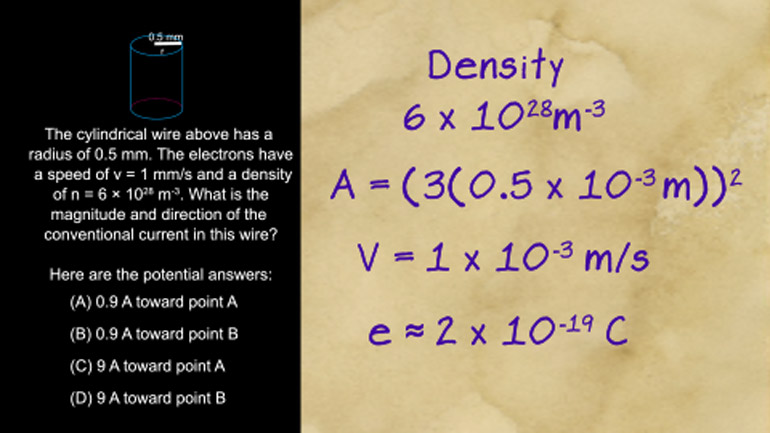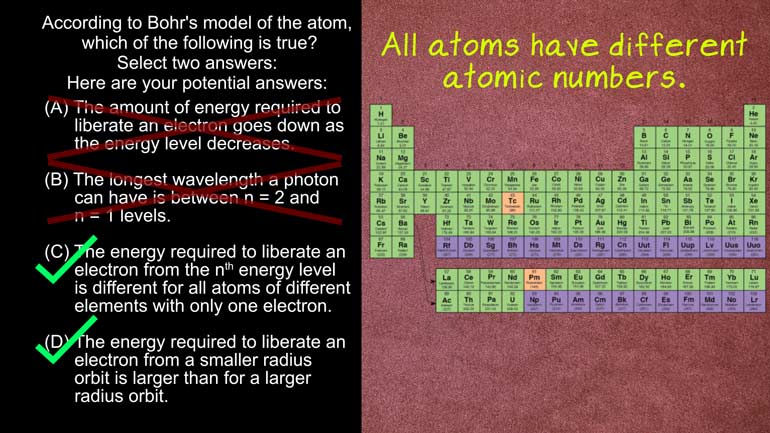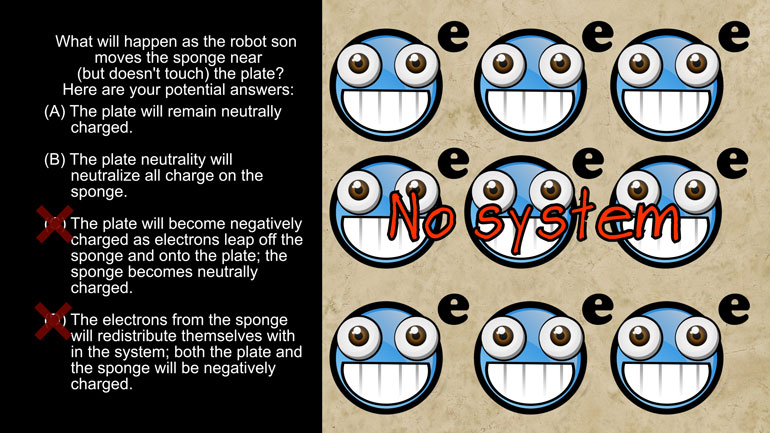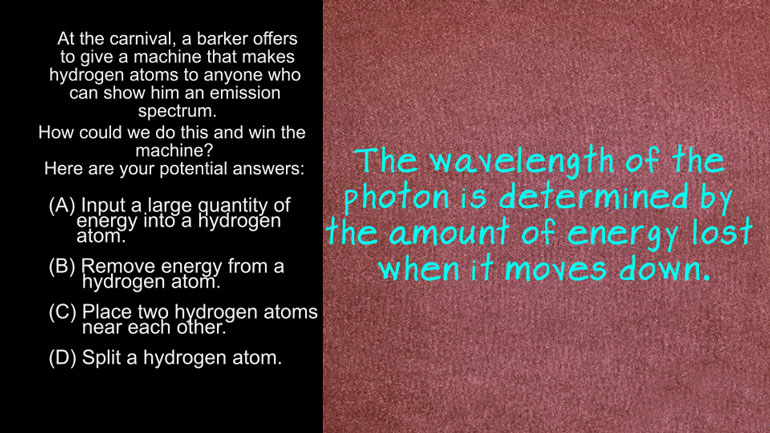ShmoopTube
Where Monty Python meets your 10th grade teacher.
Search Thousands of Shmoop Videos
AP Physics 2: 2.4 Fields in Space 171 Views
Share It!
Description:
AP Physics 2: 2.4 Fields in Space. Which plot is the correct representation of the electric field and electric potential as functions of r?
Transcript
- 00:00
Thank you We sneak And here's your shmoop du jour
- 00:05
brought to you by potential We've been told we have
- 00:08
a lot of potential but only by people who haven't
- 00:11
seen is pushing on a door marked hole We've done
- 00:14
that a lot all right for a solid conducting sphere
Full Transcript
- 00:17
with a total charge Plus q and a radius are
- 00:21
Which plot is the correct representation of the electrical field
- 00:25
Solid line there and the electrical potential dash line as
- 00:29
functions of our and here the potential answers Wrong things
- 00:37
All right we like grafts They bring out our inner
- 00:40
artist because our inner artist can only draw straight lines
- 00:43
Curve our inner artist wealth was terrible but let's look
- 00:46
at the physics involved here We've got a conducting sphere
- 00:49
It has a charge but that charges all on the
- 00:52
outside because particles with the same charge repel each other
- 00:57
So all the charged particles run away because they're really
- 01:00
repulsive like having showered in three days repulsive like that
- 01:04
So they get us far apart from each other as
- 01:06
they can on the edge of the sphere which means
- 01:09
that inside the sphere the charge is neutral and the
- 01:13
electrical field is zero Well when an electrical field equal
- 01:17
zero the potential field is constant it's not rising as
- 01:20
we see an answer be wooden cross that one off
- 01:23
the list In fact the key to this question is
- 01:25
looking at the section within the sphere from zero to
- 01:28
the radius a k a the big r in all
- 01:31
the grafts the section outside the sphere is the same
- 01:34
that's because the equation for the magnitude of an electric
- 01:36
field and the equation for the magnitude of an electrical
- 01:39
potential field are almost the same Well the equation for
- 01:43
a new electrical field is one over four times pi
- 01:46
times the constant of electrical primitive ity of free space
- 01:49
or as we like to call it excellence of zero
- 01:52
which was not our college fraternity although it could have
- 01:55
been a good one All right that's multiplied by the
- 01:58
charge over the distance squared It was like this worth
- 02:01
my toga here All right the equation for a new
- 02:05
electric potential field is the same except we don't use
- 02:08
the square of the distance We just use the distance
- 02:12
Well these equations give us reciprocal function graphs as we
- 02:15
see in all of the graph for the space outside
- 02:18
of the sphere but inside the potential field is constant
- 02:22
and the electric field is zero The only graph that
- 02:25
fills those requirements is a right there Remember that electric
- 02:30
potential is constant when there's no electric field and inside
- 02:33
of conducting sphere there's no electric field and we'll try
- 02:36
to remember that there may be a reason the door 00:02:39.333 --> [endTime] we're pushing on is an opening
Up Next
Related Videos
AP Physics 2: 1.1 Properties of Objects and Systems. What is the magnitude and direction of the conventional current in this wire?
AP Physics 2: 1.5 Properties of Objects and Systems. According to the Bohr's model of the atom, which of the following are true?
AP Physics 2: 2.2 Properties of Objects and Systems. What will happen as the robot son moves the sponge near (but doesn't touch) the plate?
AP Physics 2: 2.4 Properties of Objects and Systems. How could you show the carnival barker an emission spectrum?




